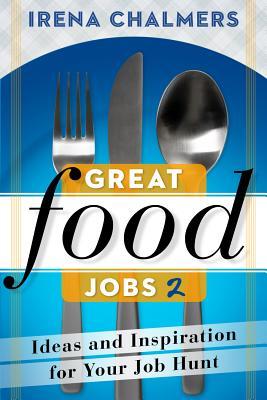Well, hello!
My name is Rio, and I am one of the new interns at Beaufort Books this spring! My nom de plume this year will be Beausenberry Pie, because I love pie: I love making it, eating it, and learning new recipes for it. (My personal new favorite, which I made for the holidays, is a winter fruit fig-cranberry-apple-pear pie; it’s perfect for cold weather!)
As someone who is, clearly, obsessed with food, I have a special place in my heart for cookbooks and food books. During the holidays, I received and gave myself two books having to do with food: the first, a yellow tome entitled The Gourmet Cookbook, and the second a collection of food essays collected by the New Yorker, called Secret Ingredients. I’ve always found cookbooks to be far more than receptacles for ingredient lists and food stains, and the one I received was no exception. Before each section, the author wrote stories about her family and their traditions, how she used the recipes, and different tips on how to prepare difficult meat or pastry dishes. I’ve already started adding notes of my own, adding to the emotional weight of the book and making it just as important to me as my battered copies of the Harry Potter series and The Lord of the Rings trilogy.
Secret Ingredients captures the often strange world of food writing. It contains words from everyone who’s anyone, from Woody Allen to Dorothy Parker to A.J. Liebling. Together, they tap into the heart of what makes food so special: it relates us to other humans, keeps us sane, happy, and connected, and, in my opinion, can bring understanding of foreign culture and history closer than a textbook alone. The people writing in this book clearly love food, and want to show their passion to the world. Food and food writing is, at heart, a cultural exchange; by explaining food and our reactions to it, we explain ourselves.
I’m really looking forward to working at Beaufort Books this spring and getting to know everyone, through face-to-face interaction or through the blog. I can already tell it’s going to be a fantastic spring!
With much gustatory love,
Beausenberry Pie
N.B.: As a way to make my mark on the blog this season, I’ve decided to include a relevant pie or dessert recipe for every post I make. Since this is an introduction, I will give you the pie recipe I mentioned above. If you’re gluten-free or don’t want to make your own pie crust, you can easily make a gluten-free one or use a store-bought crust and it will still taste delicious.
Winter Fruit Pie, from Epicurious: http://www.epicurious.com/recipes/food/views/Deep-Dish-Winter-Fruit-Pie-with-Walnut-Crumb-354977
Pastry
- 1 3/4 cups (8 3/4 ounces) all-purpose flour
- 1 tablespoon granulated sugar
- 1/2 teaspoon fine sea salt
- 12 tablespoons (6 ounces) cold unsalted butter, cut into 1/2-inch cubes
- 3 tablespoons ice water
- 1 teaspoon freshly squeezed lemon juice
Walnut Crumb Topping (optional)
- 3/4 cup (3 3/4 ounces) all-purpose flour
- 3/4 cup packed (5 3/4 ounces) brown sugar
- 3/4 cup (3 ounces) raw walnuts, coarsely chopped
- 1 1/2 teaspoons ground cinnamon
- 1/4 teaspoon fine sea salt
- 6 tablespoons (3 ounces) unsalted butter, melted
Fruit Filling
- 1 cup (5 1/2 ounces) dried figs
- 4 small apples, peeled, cored, and sliced 1/2 inch thick (12 ounces prepped)
- 4 pears, peeled, cored, and sliced 1/2 inch thick (1 1/4 pounds prepped)
- 1 cup (4 ounces) cranberries, fresh or frozen
- 1/2 cup (3 1/2 ounces) granulated sugar
- 2 tablespoons cornstarch
preparation
To make the pie pastry, put the flour, sugar, and salt in a bowl, stir to combine, then put the bowl in the freezer for 10 minutes.
Add the butter to the flour mixture and toss to evenly coat. Cut the butter into the flour mixture using a pastry blender, a food processor, an electric mixer, or your hands, just until the mixture becomes coarse and crumbly and the butter is the size of peas. Stir the water and lemon juice together, then pour over the dry ingredients and stir just until the dry ingredients are moistened.
Dump the dough onto a well-floured work surface and press it into a 6-inch disk. Wrap in plastic wrap and refrigerate for at least 1 hour.
Roll the chilled dough into a 14-inch disk, then line a 9 or 10 by 3-inch springform pan with the rolled-out dough. Patch any holes and trim off any dough that hangs over the edges of the pan. Chill for an additional 30 minutes while you prepare the crumb topping and the fruit filling.
To make the walnut crumb topping, mix the flour, brown sugar, walnuts, cinnamon, and salt together in a bowl. Stir in the butter, then work it in with your hands until the texture of crumbs. Put the topping in the refrigerator while you make the fruit filling.
Position a rack in the lower third of the oven and preheat the oven to 375°F.
To make the fruit filling, remove the stem from each fig, then boil the figs in 1 cup of water for 5 minutes. Drain and set aside until cool enough to handle.
Slice each fig into 4 to 5 pieces, put them in a large bowl, and add the apples, pears, and cranberries. Separately, rub the sugar and cornstarch together, then add to the fruit and gently toss until evenly coated.
Transfer the filling to the pie shell and top with the walnut crumb. Bake in the lower third of the oven for 60 to 75 minutes, or until the crumb is golden, the fruit juices are bubbling thickly around the edges, and the fruit is tender when pierced with a wooden skewer. If the crumb is getting too dark, cover it with foil.
 (Willy Wonka and the Chocolate Factory, Paramount Pictures)
(Willy Wonka and the Chocolate Factory, Paramount Pictures)




 J. K. Rowling: When Harry Potter is first introduced in Rowling’s series, he is shown as a malnourished child who has never had enough to eat at his aunt and uncle’s house. His cousin, on the other hand, is described as a portly boy who is double the size of young Harry. When Harry finally gets to Hogwarts and sees the amount of food available to him, it is such a beautiful scene. Everything that Harry knew about his life has completely changed, including the amount of food that is presented to him. I’m surprised there weren’t more morbidly obese characters in the Harry Potter series, considering the food in the Hogwarts great hall was never-ending and would simply appear on the plates. I guess Rowling was trying to instill values of self-control in her young readers (or she didn’t think that part through all the way). But you know a food is well-written when it is recreated in the real world. In college, before the creation of “
J. K. Rowling: When Harry Potter is first introduced in Rowling’s series, he is shown as a malnourished child who has never had enough to eat at his aunt and uncle’s house. His cousin, on the other hand, is described as a portly boy who is double the size of young Harry. When Harry finally gets to Hogwarts and sees the amount of food available to him, it is such a beautiful scene. Everything that Harry knew about his life has completely changed, including the amount of food that is presented to him. I’m surprised there weren’t more morbidly obese characters in the Harry Potter series, considering the food in the Hogwarts great hall was never-ending and would simply appear on the plates. I guess Rowling was trying to instill values of self-control in her young readers (or she didn’t think that part through all the way). But you know a food is well-written when it is recreated in the real world. In college, before the creation of “ Happy Thanksgiving, readers! Well, happy early Thanksgiving, anyway. We hope that you will be spending Thanksgiving with the friends, family, and food of your choice. I will be spending the day dreading a shift at the mall on Black Friday.
Happy Thanksgiving, readers! Well, happy early Thanksgiving, anyway. We hope that you will be spending Thanksgiving with the friends, family, and food of your choice. I will be spending the day dreading a shift at the mall on Black Friday.
 A job would be nice.
A job would be nice.